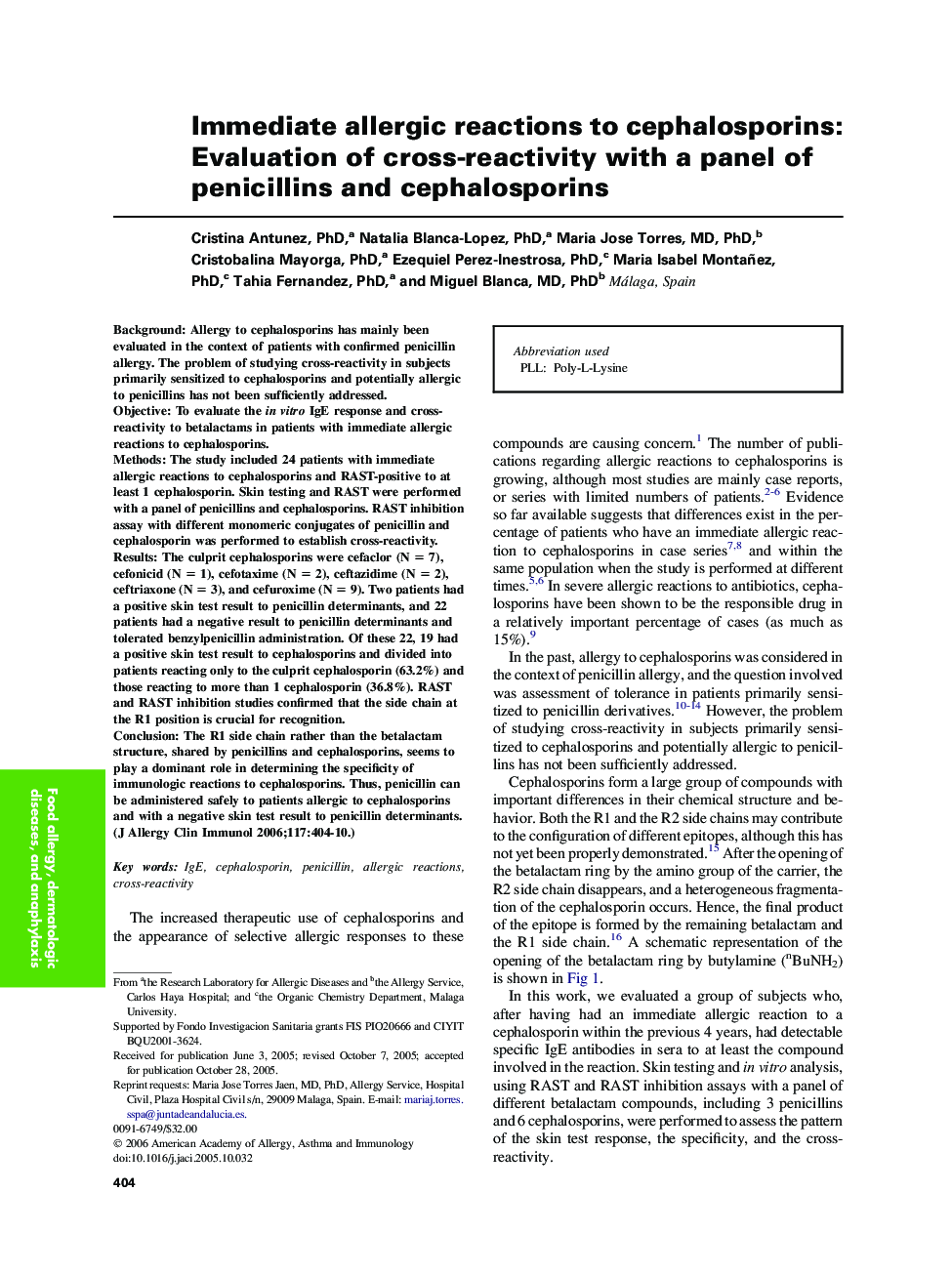| Article ID | Journal | Published Year | Pages | File Type |
|---|---|---|---|---|
| 3203270 | Journal of Allergy and Clinical Immunology | 2006 | 7 Pages |
BackgroundAllergy to cephalosporins has mainly been evaluated in the context of patients with confirmed penicillin allergy. The problem of studying cross-reactivity in subjects primarily sensitized to cephalosporins and potentially allergic to penicillins has not been sufficiently addressed.ObjectiveTo evaluate the in vitro IgE response and cross-reactivity to betalactams in patients with immediate allergic reactions to cephalosporins.MethodsThe study included 24 patients with immediate allergic reactions to cephalosporins and RAST-positive to at least 1 cephalosporin. Skin testing and RAST were performed with a panel of penicillins and cephalosporins. RAST inhibition assay with different monomeric conjugates of penicillin and cephalosporin was performed to establish cross-reactivity.ResultsThe culprit cephalosporins were cefaclor (N = 7), cefonicid (N = 1), cefotaxime (N = 2), ceftazidime (N = 2), ceftriaxone (N = 3), and cefuroxime (N = 9). Two patients had a positive skin test result to penicillin determinants, and 22 patients had a negative result to penicillin determinants and tolerated benzylpenicillin administration. Of these 22, 19 had a positive skin test result to cephalosporins and divided into patients reacting only to the culprit cephalosporin (63.2%) and those reacting to more than 1 cephalosporin (36.8%). RAST and RAST inhibition studies confirmed that the side chain at the R1 position is crucial for recognition.ConclusionThe R1 side chain rather than the betalactam structure, shared by penicillins and cephalosporins, seems to play a dominant role in determining the specificity of immunologic reactions to cephalosporins. Thus, penicillin can be administered safely to patients allergic to cephalosporins and with a negative skin test result to penicillin determinants.
